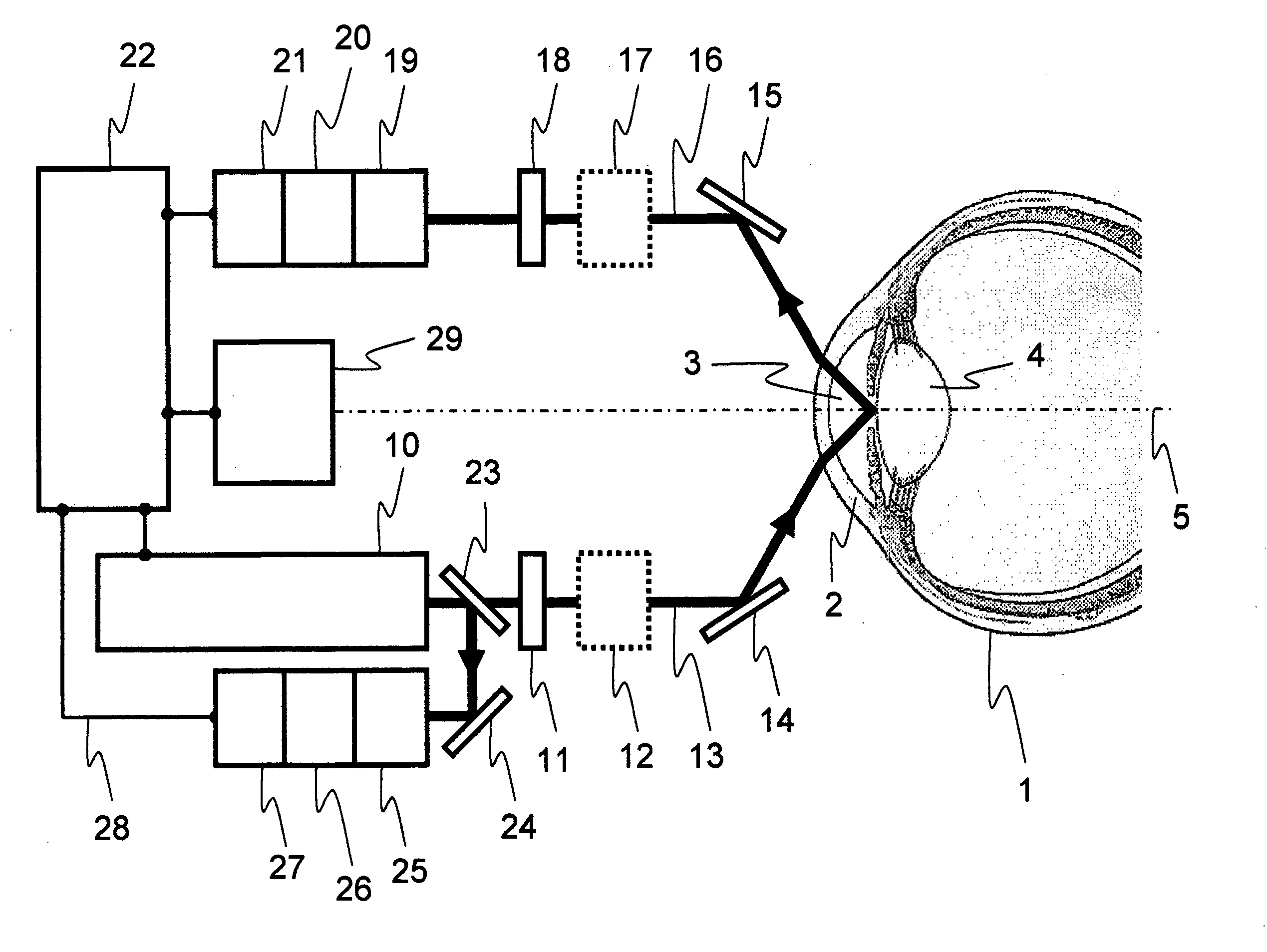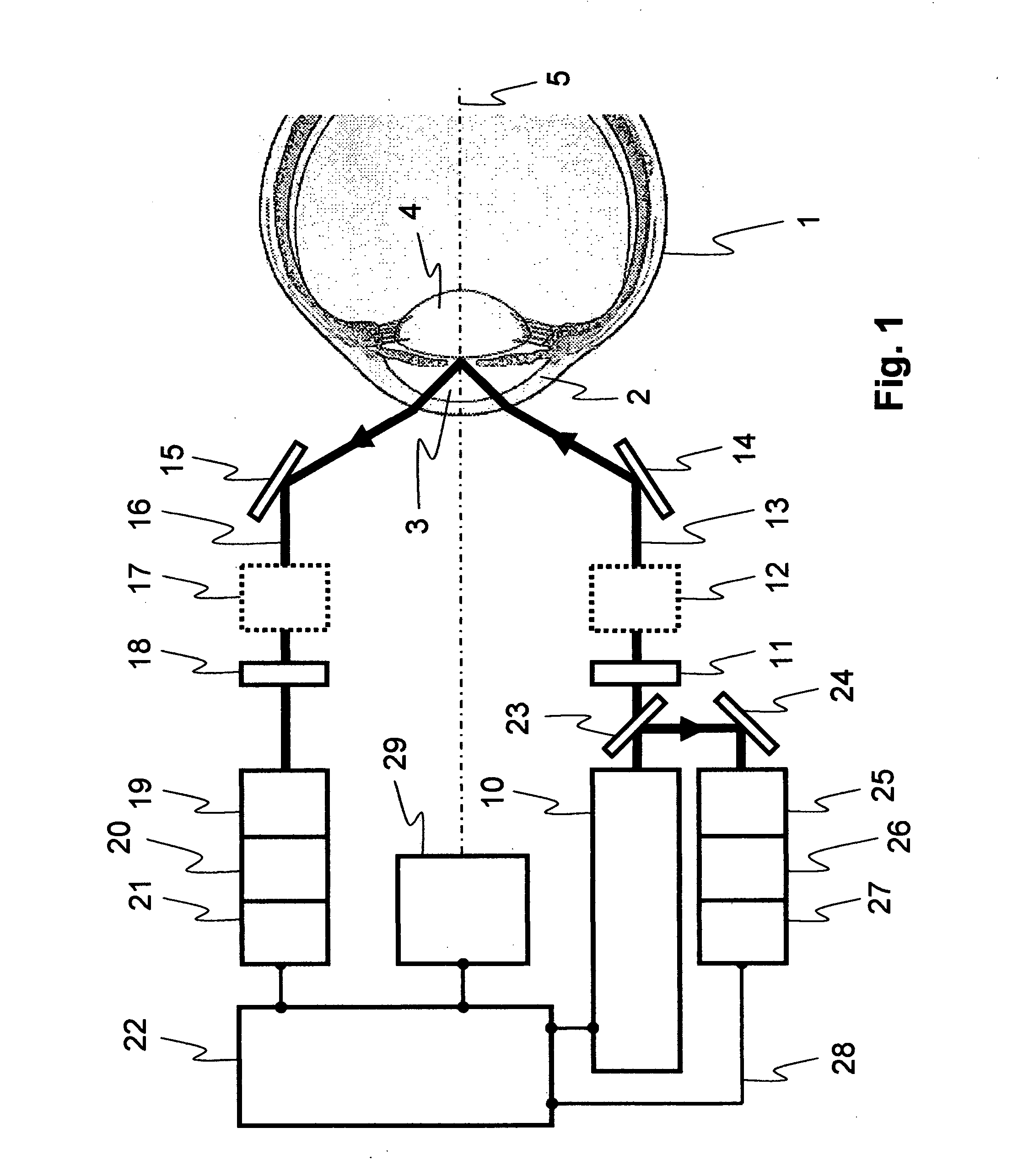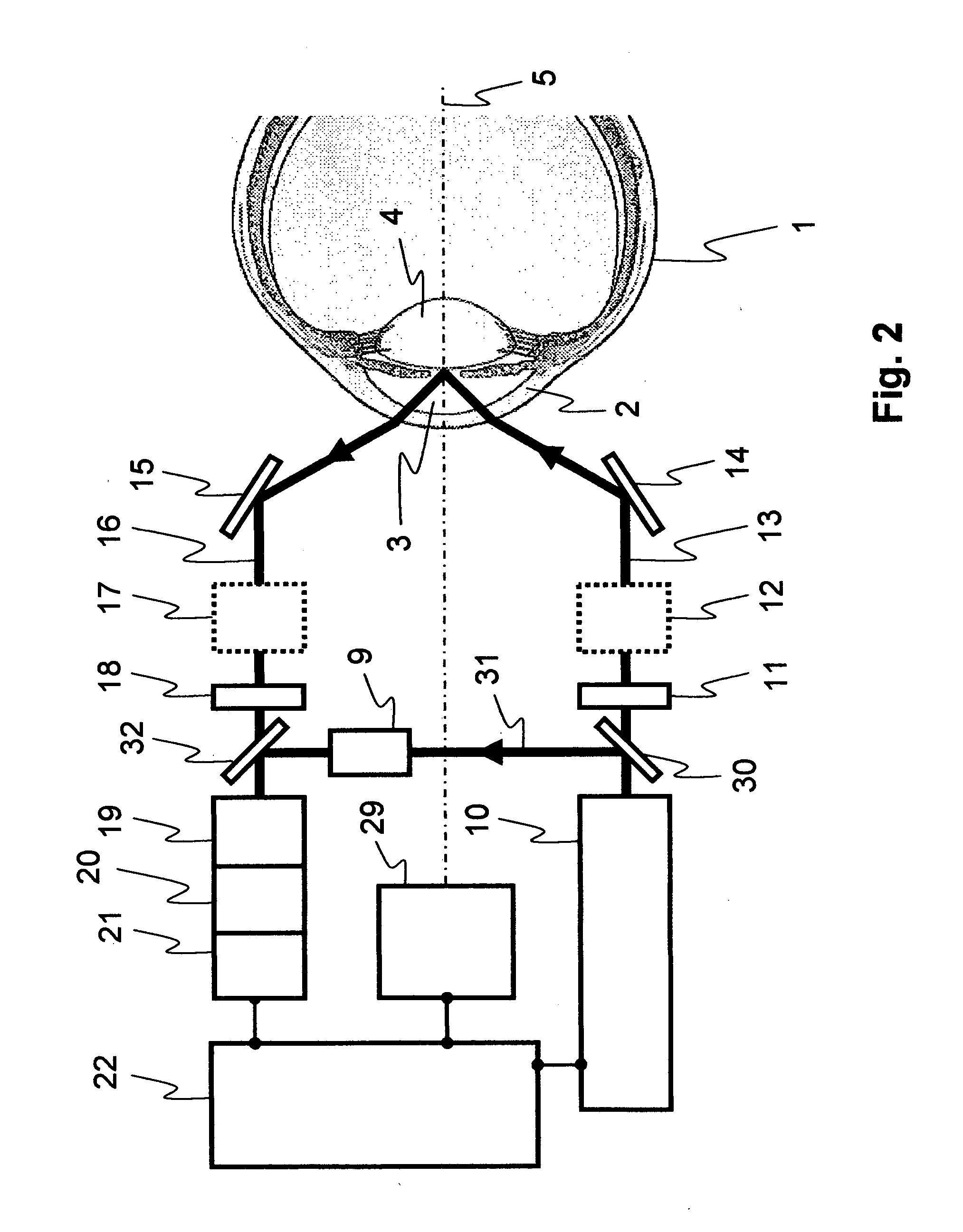Method and device for measuring dissolved substances in human or animal intraocular fluid
- Summary
- Abstract
- Description
- Claims
- Application Information
AI Technical Summary
Benefits of technology
Problems solved by technology
Method used
Image
Examples
Embodiment Construction
[0025]The invention solves the formulated problem by a polarimetric method in which the clearly different wavelength dependencies of the optical activities and the birefringence of the cornea are logically exploited. To illustrate the method it is necessary firstly to describe the device according to the invention for carrying out the method.
a) Device According to the Invention
[0026]FIG. 1 shows a schematic overview of the device according to the invention. The polarimetric measurement is carried out on an eye 1 which has the cornea 2, the anterior aqueous humour 3 and the lens of the eye 4. The line connecting the centre of the iris and the centre of the fovea centralis (region of the sharpest vision) is here called optical axis 5. The device contains a radiation source 10 which can emit collimated radiation at least in the spectral range of 440 nm to 700 nm, but preferably in an even broader spectral range of from 330 to 1050 nm. The radiation given off by the radiation source 10 ...
PUM
 Login to View More
Login to View More Abstract
Description
Claims
Application Information
 Login to View More
Login to View More - R&D
- Intellectual Property
- Life Sciences
- Materials
- Tech Scout
- Unparalleled Data Quality
- Higher Quality Content
- 60% Fewer Hallucinations
Browse by: Latest US Patents, China's latest patents, Technical Efficacy Thesaurus, Application Domain, Technology Topic, Popular Technical Reports.
© 2025 PatSnap. All rights reserved.Legal|Privacy policy|Modern Slavery Act Transparency Statement|Sitemap|About US| Contact US: help@patsnap.com



